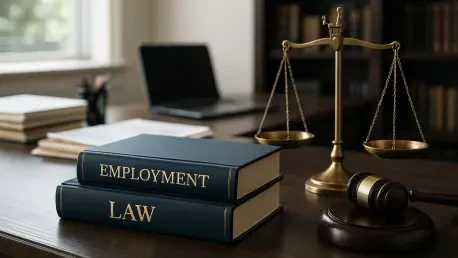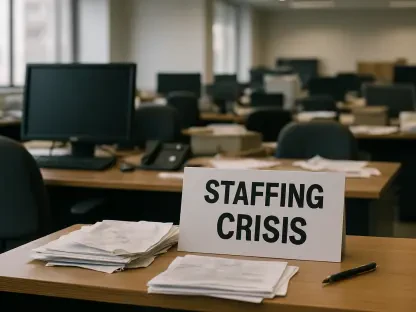As we dive into the complex intersection of free speech and employment law, I’m thrilled to sit down with Sofia Khaira, a renowned expert in diversity, equity, and inclusion, who brings a wealth of knowledge on workplace policies and legal protections. With a deep commitment to fostering equitable environments, Sofia has guided numerous organizations in navigating the delicate balance between employee rights and institutional responsibilities. Today, we’ll explore a recent landmark ruling by the 5th U.S. Circuit Court of Appeals involving a professor at the University of Texas at Austin, unpacking the nuances of free speech protections for public employees, the concept of adverse employment actions, and the broader implications for academia and beyond.
Can you walk us through the core of the 5th U.S. Circuit Court of Appeals’ ruling in the recent case involving a professor at the University of Texas at Austin?
Absolutely, Alex. The crux of the ruling in this case, often referred to as Lowery v. Mills, is that for a government employee to claim a First Amendment violation based on their speech, they must demonstrate a tangible adverse employment action. The court emphasized that mere complaints or discomfort—described as ‘grumblings’—aren’t enough. In this instance, the professor didn’t face firing, demotion, or any concrete negative change in his job status. Instead, the university renewed his contract and even gave him a raise. So, the court concluded that without a clear detrimental impact on his employment, there was no basis for a free speech violation claim under the law.
What specific issues did the professor raise against the university that led to this legal battle?
The professor was quite vocal in his criticism of the university’s policies, particularly around affirmative action and what he called a ‘DEI ideology.’ He felt these initiatives were misguided and spoke out publicly against the administration’s approach. He claimed this led to retaliation, alleging that university officials threatened his job, his pay, his affiliation with a specific institute, and even his research opportunities. These accusations painted a picture of a hostile response to his outspokenness, which he believed stifled his free speech as both a citizen and an academic.
How did the university’s response to the professor’s criticisms factor into the court’s perspective on the case?
The university’s actions were pivotal in the court’s reasoning. Despite the professor’s allegations of threats and retaliation, the institution didn’t take any punitive steps like termination or demotion. On the contrary, they reappointed him to his role at the Salem Center for Public Policy and approved a $5,000 raise while the lawsuit was ongoing. The court saw this as evidence that there was no adverse employment action—essentially, the university’s behavior didn’t harm his professional standing, which undermined his claim of retaliation or speech suppression.
Could you explain what ‘adverse employment action’ means in this legal context and why the professor’s situation didn’t meet that threshold?
In legal terms, an adverse employment action refers to a significant negative change in someone’s job status that directly impacts their career or livelihood. Think along the lines of being fired, demoted, or having a substantial cut in pay or benefits. In this case, the court found that the professor’s experiences—alleged threats, emails from colleagues questioning his conduct, or even a police investigation into his social media posts—didn’t rise to that level. None of these actions resulted in a concrete loss or penalty to his position or income. The bar is set high to ensure that only serious, measurable harms are actionable under First Amendment claims in employment settings.
The court described the professor’s complaints as ‘grumblings’ and not suitable for federal oversight. Can you unpack what they meant by that?
Certainly. By labeling the professor’s claims as ‘grumblings’ or ‘general insinuations,’ the court was essentially saying that his allegations lacked specificity and substance to warrant a federal case. They viewed his complaints as more personal frustrations or vague perceptions of hostility rather than evidence of systematic viewpoint suppression. The court also expressed concern about federal courts becoming entangled in every workplace disagreement or minor conflict, noting that such issues are often better handled internally or at a state level rather than escalating to federal jurisdiction.
How does this ruling fit into the larger landscape of free speech disputes in academic or workplace settings?
This ruling reinforces a trend in free speech cases involving public employees where courts prioritize clear, tangible harm over subjective feelings of retaliation. It aligns with precedents that require a high threshold for proving First Amendment violations—something like an actual firing or demotion, as seen in other academic cases where professors faced real consequences for political or controversial statements. However, it also highlights a tension in academia, where the line between protected speech and workplace conduct can be blurry. Compared to broader workforce trends, where social media posts have led to swift terminations over political comments, this case stands out for its restraint in not punishing speech absent concrete harm.
Looking ahead, what is your forecast for how rulings like this might shape free speech protections for public employees in academia and beyond?
I think we’re going to see courts continue to uphold a strict standard for what constitutes a First Amendment violation, especially in public employment. This ruling sends a message that employees need to show real, measurable damage to their careers to succeed in such claims, which might discourage lawsuits based on perceived slights or informal pushback. In academia, it could embolden institutions to address controversial speech through dialogue or policy rather than severe discipline, knowing the legal bar for retaliation claims is high. However, it also raises questions about whether subtler forms of suppression—like chilling effects from investigations or peer pressure—will go unaddressed. I expect ongoing debates about balancing employee expression with institutional harmony, particularly as cultural and political divides deepen.









